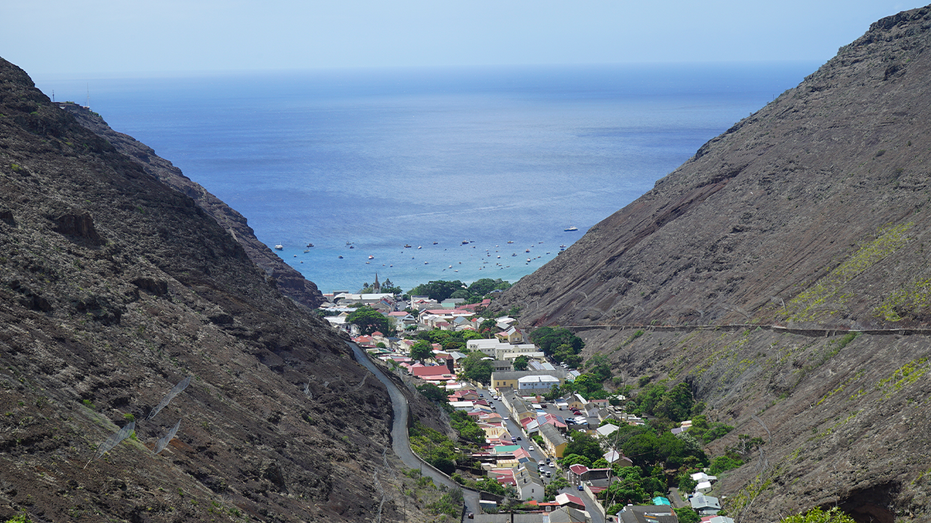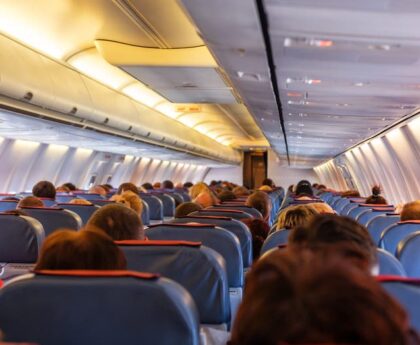St. Helena, a small, craggy island in the South Atlantic Ocean, hasn’t seen many tourists in the past for good reason: It’s one of the most remote inhabited places in the world.
Until 2017, it took five nights by boat to reach the British overseas territory, which is nearly halfway between southern Africa and Brazil. Today, with weekly commercial flights and the recent arrival of high-speed internet, the government is hoping to breathe new life into a fledgling tourism industry that welcomed about 2,100 leisure travelers in 2023.
The island has just a little more than 4,000 residents, or Saints as they call themselves, and is likely to attract a certain kind of visitor.
WORLD’S MOST REMOTE ISLAND NOW WELCOMING TOURISTS
“It’s people with a real desire to travel and learn rather than, ‘let’s go somewhere to have a bit of sunshine and some nice food,’” says Emma Phillips, whose husband, Nigel, is St. Helena’s governor.
After all, weather can be unpredictable and supplies occasionally run low when you’re 1,200 miles from the nearest continent.
“You’ve got to be prepared to embrace all of that,” Phillips says, while extolling the island’s welcoming locals, rich history and natural wonders. “Come with an open mind.”
Perhaps best known as the site of Napoleon Bonaparte’s exile from 1815 until his death in 1821, St. Helena features multiple heritage sites honoring the deposed French emperor. Visitors can tour his homes and his original burial grounds. His remains were returned to France in 1840.
The capital city, Jamestown, is an eclectic mix of new and old. British Georgian-era colonial buildings house small retail and grocery stores. There are a couple DVD rental shops — remnants of the island’s pre-high-speed internet days.
For a workout with a view, climb the 699 steps of Jacob’s Ladder on the edge of town. The 600-foot-high outdoor staircase was originally a donkey-powered cart track used to transport goods between the city and fortifications on the cliffs above.
Plantation House, 2 miles south of the capital, is a grand Georgian mansion built in 1792 by the British East India Company, which administered St. Helena until 1834. Now the official governor’s residence, the house features a collection of royal portraits and original furnishings, including antique china and a chandelier from Bonaparte’s final home.
Plantation House’s well-manicured yard is home to one of the island’s most famous residents, a venerable tortoise named Jonathan. At the approximate age of 192, Jonathan holds the Guinness World Record for the oldest living land animal. He has met several royals, including Queen Elizabeth II, who visited St. Helena in 1947, and Prince Edward, who made the trip in January.
“Jonathan is an enigmatic tortoise,” says Teeny Lucy, one of his caretakers for over a decade. “If you come to St. Helena, people usually know two things: Jonathan the tortoise and Napoleon Bonaparte.” She’s not sure who is the bigger celebrity.
Jonathan has lost his sight and sense of smell, but remains a major draw for tourists like Gilly Hill, who traveled from the U.K. to snap selfies with him.
“I just think he’s the most amazing creature,” she said.
Other bucket-list activities include swimming with Chilean devil rays or whale sharks, which are often spotted December through March. There’s also humpback whale watching from June to December. Come in January to catch peak nesting season for the wirebird, also known as the St. Helena plover, which can only be found on St. Helena.
Roughly one-third of all endemic biodiversity in U.K. territories can be found within the 47-square-mile island. More than 500 species are not seen anywhere else on earth, including 45 flowering plants and ferns.
Microclimates that range from cool tropical forests to sunny rolling grasslands and windswept volcanic cliffs can all be experienced within an hour’s drive.
With two dozen scenic trails, St. Helena can satisfy even the most avid hiker’s wanderlust. Serious trekkers might opt for the highest point, Diana’s Peak. The 2.3-mile hike takes you 2,690 feet above sea level and into Britain’s last remaining natural cloud forest.
Casual hikers can stroll along Blue Point Trail for spectacular views of Sandy Bay, Sperry Island and Castle Rock. For a moderate challenge, try the shaded hike to St. Helena’s famed Heart Shaped Waterfall, which only flows in winter and early spring. Be sure to catch the best views of the falls from the main road out of Jamestown.
Perched at 1,700 feet on one of the lushest and most remote parts of the island lies a historic estate with sweeping cloud-forest views and a really good cup of joe.
Wranghams is a small coffee farm with tours and home stays, run by Neil and Debbie Fantom.
Coffee connoisseurs seek out St. Helena’s beans, often touted as one of the rarest and most expensive varieties in the world due to their export costs and single-origin status. It sells online for $150 per half pound. Extreme isolation has ensured that the coffee plants, which were imported from Yemen in the 18th century, have never been cross-fertilized.
“Is it the best in the world? I couldn’t tell you. Is it coffee that we enjoy producing and drinking? One hundred percent,” Neil says. “We’ve got the perfect climate for it, and we do it ourselves.”
“With love,” adds Debbie.
Other local culinary delights include plo, a cross between curry and Spanish paella, fresh fishcakes, and sponge cakes with bright pink icing known as coconut fingers.
Money: St. Helena has no ATMs, credit cards are not widely accepted, and the local bank has limited hours. Be sure to bring British pounds (GBP) to cover your stay and the 20 pounds entry fee (about $25). Another option is St. Helena Bank’s prepaid Tourist Card app, which can be loaded with debit cards online and is accepted throughout the island.
Connectivity: Download essentials like the Tourist Card app and offline Google maps before you arrive, as Wi-Fi and mobile data is limited and expensive.
Getting There: Airlink flies once weekly from Johannesburg. A mid-week flight is often added during the busier summer season, December to March. You’ll need proof of medical insurance covering at least 175,000 pounds (about $223,000) to board the plane.
Where to Stay: Accommodations range from simple home stays to boutique hotels. The higher-end Mantis St. Helena has 30 rooms and complimentary, reliable internet.
Getting Around: St. Helena’s narrow roads and blind curves are not for the faint of heart. If you’re comfortable driving stick shift on the left side of the road, rental cars are available. Otherwise, taxis are your best option for island adventuring.
Article Source: Travel From Fox News Read More




